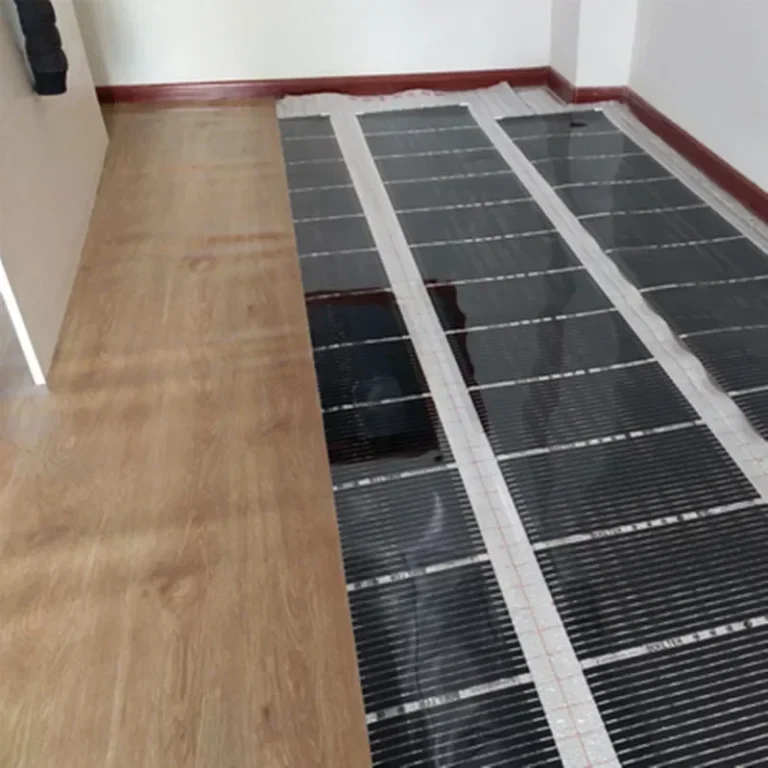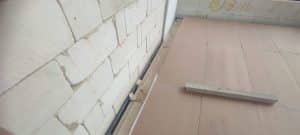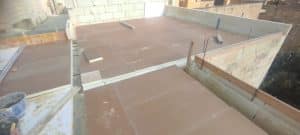When it comes to building comfort that truly lasts, underfloor heating is quickly becoming the gold standard in Malta. Sleek, silent, and incredibly energy-efficient, these systems are especially popular thanks to their even heat distribution and invisible installation. But there’s a vital element many homeowners and even contractors overlook: underfloor heating sheet insulation requirements.
Without the correct insulation, even the most advanced heating system will underperform—costing you money, reducing efficiency, and delaying warm-up times. Think of insulation as the foundation that makes your underfloor heating sheet system effective, fast, and energy-conscious.
In this article, we’ll explore exactly what the underfloor heating sheet insulation requirements are, how to meet them, and why they matter so much for your comfort and your energy bill in Malta’s unique climate.
Why Underfloor Heating Sheet Insulation Requirements Matter| Underfloor Heating Sheet Insulation Requirements
Let’s start by addressing why insulation is non-negotiable when installing heating sheets under your flooring.
Underfloor heating sheets work by emitting low-temperature, radiant heat across the entire floor surface. If there’s no insulation below them, a significant portion of that heat will be lost downward—into your concrete slab or the lower level of your building—instead of radiating into the room where you actually want it.
In fact, poor insulation can lead to:
Up to 50% heat loss
Longer warm-up times (by up to 45 minutes)
Uneven heat distribution
Much higher electricity bills
For a typical room in Malta of about 20m², inefficient insulation can mean paying an extra €100–€150 per year in wasted electricity alone.
That’s why understanding underfloor heating sheet insulation requirements is a must—not just for comfort, but for sustainability and cost-efficiency.
1. Subfloor Insulation Is Essential| Underfloor Heating Sheet Insulation Requirements
The first and most important requirement is insulating the subfloor—that’s the layer directly beneath your underfloor heating sheet.
Recommended Insulation Boards:
Extruded Polystyrene (XPS): Water-resistant, strong, and ideal for tiled floors
Expanded Polystyrene (EPS): Lightweight and affordable
Foil-faced PIR Boards: Offer superior thermal performance (best for low-profile builds)
In Malta, where many buildings feature uninsulated concrete slabs or stone flooring, heat can easily escape into the substructure. By placing thermal boards under your heating sheet system, you reflect the warmth upward, improving efficiency by up to 40%.
Minimum Recommended Thickness:
XPS/EPS Boards: 6–10mm
PIR Boards: 10–25mm (depending on available floor depth)
Cost: Approx. €8–€18/m² depending on material quality and thickness.
2. Use High-Tog Flooring Only with Special Precautions| Underfloor Heating Sheet Insulation Requirements
The type of flooring you place over your underfloor heating sheets also affects how insulation works. Materials with a high thermal resistance (high tog rating) act as insulators themselves, slowing heat transfer.
For best results, your flooring’s total tog value should not exceed 1.5 tog (including underlay). Exceeding this threshold compromises performance and delays heating times significantly.
Common Flooring Materials & Tog Ratings:
Ceramic Tiles/Stone: 0.1–0.2 tog (perfect)
Laminate: 0.4–0.8 tog (acceptable with proper insulation)
Vinyl: 0.25–0.5 tog (ensure product is underfloor heating compatible)
Carpet with Underlay: Often exceeds 2.0 tog (not recommended)
Solution for High-Tog Floors:
If you must use thicker carpet or engineered wood, double-layer insulation boards may be required. Contact us for custom advice at https://kibitec.com/contact-us/
3. Moisture Protection Is Part of the Requirements| Underfloor Heating Sheet Insulation Requirements
Especially in Malta’s humid coastal regions or ground-level homes, moisture protection is a vital part of underfloor heating sheet insulation requirements.
Here’s what you need:
Vapour Barriers (DPMs): Prevent ground moisture from rising into the system
Foil-Backed Insulation Boards: Help reflect heat upward and block damp
Without moisture protection, you risk long-term damage to your electrical heating system, flooring adhesives, and substructure.
Cost Estimate:
Vapour barrier membrane: €1–€3/m²
Foil insulation boards: €10–€20/m²
While this might seem like a small detail, it’s essential for long-lasting performance—especially in basements or buildings close to sea level.
4. Maintain Proper Compression and Load-Bearing Standards| Underfloor Heating Sheet Insulation Requirements
Another critical aspect of underfloor heating sheet insulation requirements is compression resistance. The insulation board must be strong enough to support:
The heating sheet system
Floor adhesive
Final flooring (tiles, wood, etc.)
Daily foot traffic and furniture
Recommended Compression Strength:
At least 300 kPa for residential use
500 kPa or higher for heavy-use areas (kitchens, hallways)
Boards with insufficient load-bearing capacity will compress over time, potentially damaging your heating sheets and causing uneven surfaces.
Best Option for Malta Homes:
PIR or XPS boards, reinforced if large furniture (like a marble kitchen island or heavy wardrobes) will sit on top
Always ensure your installer is using load-certified insulation boards that meet European standards.
5. Accommodate for Insulation in Floor Build-Up Height| Underfloor Heating Sheet Insulation Requirements
One of the most overlooked yet vital underfloor heating sheet insulation requirements is floor height planning. Every layer—from insulation to adhesive to flooring—adds thickness.
A typical build-up looks like this:
| Layer | Approx. Thickness |
|---|---|
| Subfloor (concrete) | Existing |
| Vapour Barrier | 1–2 mm |
| Insulation Board | 6–20 mm |
| Heating Sheet | 2–3 mm |
| Adhesive or Smoothing | 3–5 mm |
| Final Floor (tile/wood) | 8–12 mm |
Total Added Height: ~20–35 mm
In Maltese homes, especially apartments or old townhouses, this can affect:
Door clearances
Skirting boards
Step heights
Always evaluate these early in the planning phase to avoid costly surprises during installation.
You Can Buy or Get It Installed by Professionals| Underfloor Heating Sheet Insulation Requirements
Want to ensure your insulation is fully compliant with all underfloor heating sheet insulation requirements? We offer both supply and full installation service in Malta—with professional consultation tailored to your property’s structure and usage needs.
📞 Reach out for a quote at: https://kibitec.com/contact-us/
6. Insulation for Uneven or Damaged Subfloors| Underfloor Heating Sheet Insulation Requirements
In many traditional Maltese homes—especially townhouses or buildings with a long history—you might encounter uneven, cracked, or irregular subfloors. If this is the case, you need more than just standard insulation boards.
Best Options:
Self-levelling compounds: Applied directly over rough concrete or stone to create a flat base
Flexible insulation boards: Designed to accommodate minor surface imperfections
Floating floor systems: Ideal for when permanent floor alterations are not possible
Proper insulation installation on uneven floors ensures your heating sheets don’t develop “cold spots” or become stressed, which can lead to malfunction over time.
💡 Pro Tip: Always have a qualified technician assess your subfloor first. You can book an evaluation with us here:
👉 https://kibitec.com/contact-us/
7. Retrofitting Insulation in Older Buildings| Underfloor Heating Sheet Insulation Requirements
Renovating an older home in Malta? Then insulation becomes even more critical—and a bit more complex.
Older stone homes tend to have:
Minimal subfloor insulation
Porous materials that absorb heat
No damp proofing at the base layer
In such cases, the best approach includes:
Damp-proof membranes (DPMs) to prevent rising moisture
High-performance thin insulation boards, such as 10mm foil-backed PIR
Low-profile underfloor heating sheets that require minimal build-up height
Flexible adhesives to bond insulation securely to older materials
You may also need to insulate around the perimeter of the room to prevent thermal bridging (where heat escapes sideways through walls or floor edges).
Installation Tip: Use mechanical fixings with insulation adhesive to ensure tight bonding in uneven conditions.
8. Combining Smart Heating with Smart Insulation| Underfloor Heating Sheet Insulation Requirements
If you’re aiming for maximum efficiency, consider combining high-quality insulation with smart heating controls. This dual approach gives you precision control over both heat output and heat retention.
What to Combine:
Foil-backed insulation that reflects radiant heat upward
Smart thermostats that monitor and adapt to heat loss
Zoned heating systems paired with insulation by room type
Occupancy sensors that turn heating off in unused spaces
In Malta, where temperature shifts are less extreme but homes can be draughty, this combination helps maintain a consistent temperature using less energy.
Expected Savings: Up to 30% reduction in energy use, especially when used with automation during shoulder seasons (March–May and October–November).
9. Real Cost vs. Savings in Malta| Underfloor Heating Sheet Insulation Requirements
Let’s break down the real financial impact of underfloor heating sheet insulation requirements in a typical 25m² living room.
| Item | Cost per m² | Total (25m²) |
|---|---|---|
| PIR Insulation Board (10mm) | €12 | €300 |
| Vapour Barrier Membrane | €2 | €50 |
| Floor Adhesive | €4 | €100 |
| Labour (insulation layer only) | ~€10 | €250 |
| Total | €700 approx. |
Now compare that to energy savings over 5 years:
Without insulation: €250–€300 per year in electricity
With insulation: €150–€180 per year in electricity
Total Savings Over 5 Years: €500–€750
This means your insulation pays for itself in just 2 to 3 years.
10. DIY vs. Professional Insulation: What’s Better?| Underfloor Heating Sheet Insulation Requirements
While installing underfloor heating sheets can be done by confident DIYers, insulation should ideally be handled by professionals.
Why?
Improper installation leads to air gaps and heat loss
Moisture-proofing steps are often skipped by amateurs
Floor height tolerances can be misjudged
Incorrect compression strength may cause structural issues later
Unless you have experience working with construction-grade materials, insulation is not the place to cut corners—especially with Malta’s varied construction styles.
We provide both materials and professional installation tailored for Maltese homes. Get in touch here:
👉 https://kibitec.com/contact-us/
11. Common Mistakes to Avoid| Underfloor Heating Sheet Insulation Requirements
Even professionals sometimes get tripped up by poor planning. Here are the most common mistakes seen in insulation jobs:
❌ Skipping vapour barriers in ground floors
❌ Choosing insulation boards too thin (less than 6mm)
❌ Not accounting for compression from heavy furniture
❌ Using standard foam insulation instead of rigid thermal boards
❌ Installing insulation over dust/debris without cleaning first
❌ Misjudging floor height—resulting in door fitting issues
Solution: Follow manufacturer and local building regulations and consult a pro to avoid long-term heating inefficiency or floor damage.
12. Don’t Forget Perimeter Insulation Strips| Underfloor Heating Sheet Insulation Requirements
This one’s often forgotten—but crucial.
Perimeter insulation strips are thin foam barriers placed along the edges of the room, where the floor meets the wall. They help:
Prevent lateral heat loss into adjacent walls
Allow for thermal expansion of floor layers
Improve overall insulation performance by up to 10%
Strips cost just €1–€2 per meter but make a big difference—especially in older stone-walled buildings across Malta and Gozo.
13. When You Might Need Thermal Primers| Underfloor Heating Sheet Insulation Requirements
In certain installations—especially where adhesives are used to bond the insulation boards—you might need a thermal primer to ensure proper adhesion.
Thermal primers:
Seal porous substrates like screed or old concrete
Improve grip between layers
Minimize adhesive failure
They’re particularly useful in Malta’s humid areas or when retrofitting in coastal homes, where salt and moisture can weaken adhesives over time.
Price: About €30–€50 per 5L, enough for a 25m² room
14. Insulation for Special Zones (Wet Rooms & Kitchens)| Underfloor Heating Sheet Insulation Requirements
Bathrooms, wet rooms, and kitchens require special insulation due to their high humidity and variable usage patterns.
Look for:
Waterproof insulation boards (cement-faced or foil-backed)
Quick-drying adhesives
Additional edge sealing around fixtures
These precautions protect both your heating system and the integrity of the insulation beneath. Plus, heated floors in bathrooms with good insulation prevent mold, condensation, and cold tiles—a common issue in winter months in Malta.
15. Final Checklist Before You Install
Before any installation begins, run through this quick checklist to ensure your system will meet all underfloor heating sheet insulation requirements:
✅ Subfloor is clean, level, and dry
✅ Damp-proof membrane installed (especially on ground floors)
✅ Insulation board meets thermal and compression requirements
✅ Floor build-up height has been calculated
✅ Perimeter insulation strips in place
✅ Vapour barriers and/or thermal primers applied as needed
✅ Adhesives or fixings rated for thermal conditions
✅ Installer is familiar with local regulations and best practices
✅ Check Out Our Underfloor Heating Services in Malta
At Kibitec, we offer tailored underfloor heating solutions—supply, design, and installation—all with a focus on correct insulation to boost performance and efficiency.
Explore what we can do for your home or project here:
👉 https://kibitec.com/underfloor-heating-sheets-malta/
📞 Contact Us to Get It Done Right
Need help figuring out the right insulation system? Looking for professional installation in Malta or Gozo?
Get in touch with our expert team now and we’ll help you every step of the way:
👉 https://kibitec.com/contact-us/
Bonus Resource
Want to understand more about how underfloor heating works in general? Check out this helpful Wikipedia article on underfloor heating.




